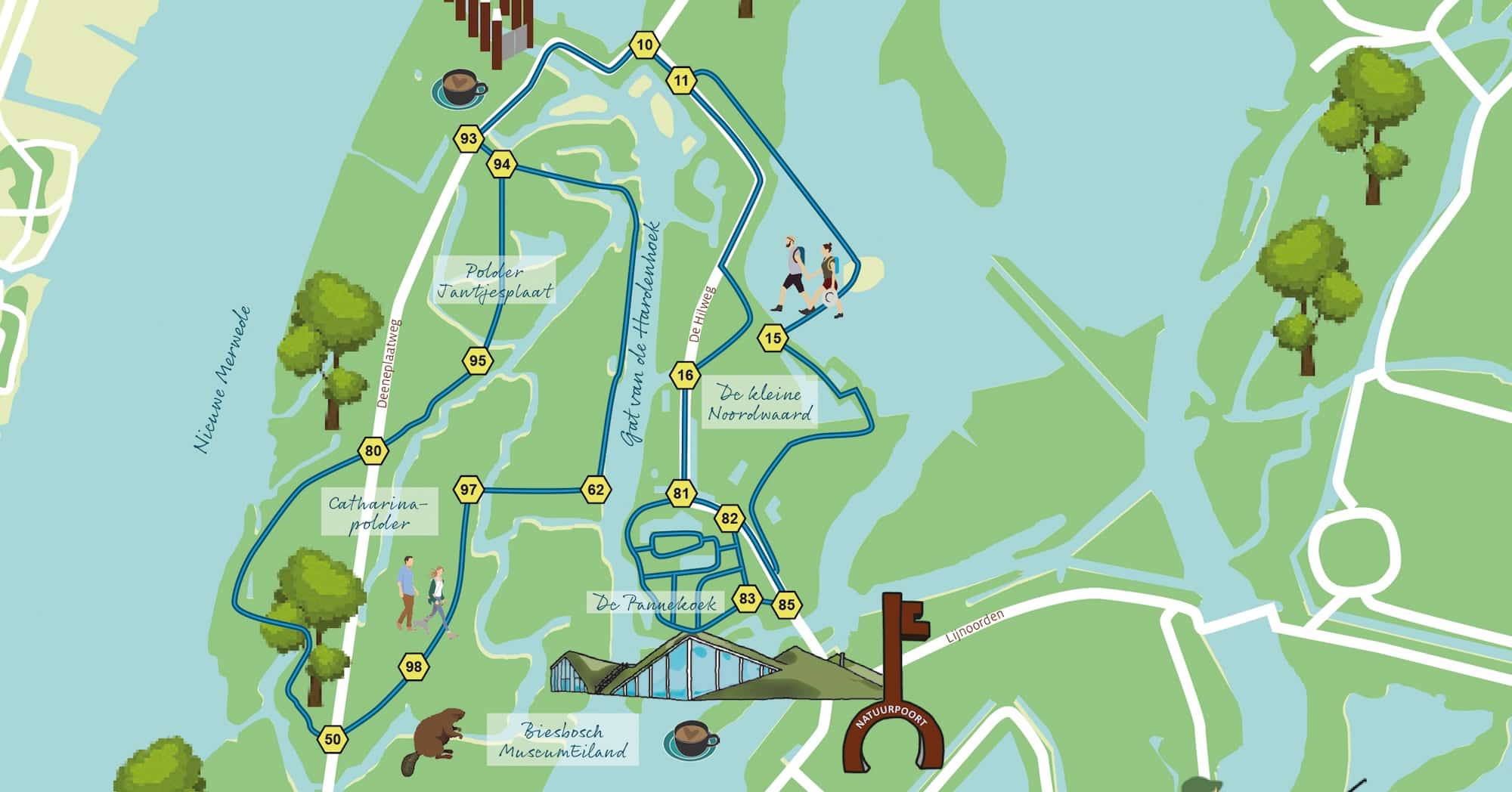Biesbosch walk 10 - 14 km
De Biesbosch and water belong together like a kayak and paddle. From its first appearance after the Sint Elisabethflood in 1421 until today, the landscape in the Biesbosch has been defined by water. Yet the landscape has been transformed considerably in recent years. The Room for the River program changed our view of how we deal with water. We no longer just contain it, but give it space wherever possible. This results in dry feet and beautiful nature.
Strolling through The Pancake
To experience the wicker culture up close, a walk through De Pannekoek is highly recommended. You can deviate from the nodes here to have a nice stroll on the small paths. Some parts of this grove are maintained in the traditional way, others are not. There, nature is the boss and allowed a wild willow forest to develop.
Water buffalo in the Noordwaard
In the Noordwaard, water buffalo graze the areas outside the dikes, which is unique for the Netherlands. The buffalo feel very comfortable there. The area is wet, and they find plenty of food. The buffalo were released here for a specific purpose: they like to swim and travel long distances. Moreover, they are a lot bigger than Highland cattle or konik horses, which allows them to digest rough food such as old reeds or cattail, in places where other grazers do not come easily. It remains quite an experience to encounter one. Do keep enough distance. Water buffalo are not dangerous, but they are curious.
Polder Jantjesplaat
This polder is a piece of rugged wetland where agricultural polders were before 2013. A new piece of Biesbosch that has also already been discovered by the osprey and the bald eagle that like to hunt here.
Biesbosch museumeiland
At the Biesbosch MuseumEiland you can learn all about how we lived and live together with the water. From the first emergence after the St. Elisabeth Flood to smuggling routes in World War II, the exhibits cover it all.
Outside, you can experience for yourself how the Biesbosch prevents higher areas from flooding. In the scale model of the Biesbosch Beleving you can slide and turn knobs yourself to see how you influence the course of the water with polders and dikes.
After the walk, you can recover at museum café Biesonder over a cup of coffee or a sandwich.
ADDITIONAL TRIP
From node 10, extend your walk with a trip to De Wassende Maan. The round trip to this work of landscape art counts 4 km and is highly recommended. De Wassende Maan was designed by visual artist Paul de Kort. The artwork is a labyrinth of gullies and dikes. The water flows in and out with the tides; from the outside, in. A dynamic and natural work of art not to be missed.
To get there, follow nodes 10, 68 and 69.

Activity: hiking